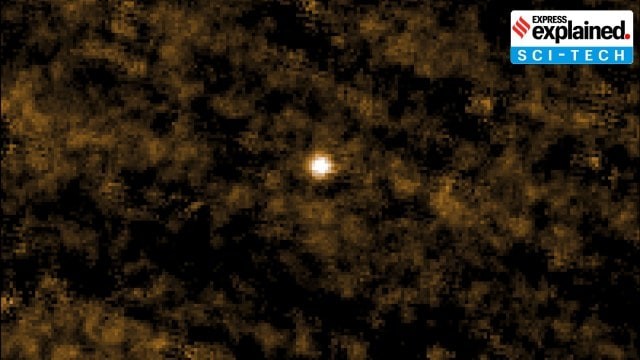





Source: Space.com
Disclaimer: Copyright infringement not intended.
Context
Details
Planetary Defense
Detection and Tracking of NEOs
Mitigation Strategies
|
Country |
Agency/Organization |
Key Initiatives/Projects |
Description |
|
United States |
NASA |
Planetary Defense Coordination Office (PDCO) |
Established in 2016 to manage efforts to detect, track, and characterize NEOs and develop mitigation strategies. |
|
Double Asteroid Redirection Test (DART) |
Mission to demonstrate the kinetic impactor technique by crashing into the asteroid Dimorphos to change its orbit. |
||
|
NEOWISE |
A space-based infrared telescope repurposed to detect and characterize NEOs. |
||
|
OSIRIS-REx |
Redirected to observe asteroid Apophis during its 2029 flyby after completing its primary mission to asteroid Bennu. |
||
|
SETI Institute |
Asteroid Terrestrial-impact Last Alert System (ATLAS) |
A ground-based system designed to detect incoming asteroids that could impact Earth, providing advance warning. |
|
|
European Union |
European Space Agency (ESA) |
Hera Mission |
A mission to follow up on NASA's DART impact, studying the effects on the binary asteroid system Didymos and Dimorphos. |
|
Flyeye Telescope |
A ground-based telescope in Italy designed to detect and track NEOs with wide-field optics. |
||
|
NEO Coordination Centre |
Central hub for data on NEO observations and risk assessments, facilitating international collaboration. |
||
|
Russia |
Roscosmos |
Automated Warning System |
A system to monitor and provide warnings about potential asteroid threats. |
|
Observational Programs |
Various ground-based telescopes and observatories dedicated to tracking NEOs. |
||
|
China |
CNSA (China National Space Administration) |
Planetary Defense Initiative |
Announced plans for a planetary defense system including asteroid detection, monitoring, and potential deflection missions. |
|
Ground-based Observatories |
Expansion of ground-based infrastructure for NEO detection and tracking. |
||
|
India |
ISRO (Indian Space Research Organisation) |
Planetary Defense Workshop |
Held workshops and expressed interest in planetary defense, potentially collaborating with other agencies for missions like observing asteroid Apophis in 2029. |
|
Space Situational Awareness & Management (SSAM) Directorate |
Plans to include planetary defense within its broader space situational awareness efforts. |
||
|
Japan |
JAXA (Japan Aerospace Exploration Agency) |
Hayabusa2 |
Mission to asteroid Ryugu, collecting samples and returning them to Earth. This mission provided valuable data on asteroid composition and behavior. |
|
Germany |
DLR (German Aerospace Center) |
Space Situational Awareness Program |
Includes efforts to detect and track NEOs, collaborating with international partners. |
|
Italy |
Italian Space Agency (ASI) |
NEO Surveillance |
Collaboration with ESA on projects like Flyeye Telescope and other ground-based observation systems. |
|
United Kingdom |
UK Space Agency |
NEO Detection Research |
Involvement in ESA's Hera mission and support for ground-based telescopes and observatories. |
|
Australia |
Space Environment Research Centre (SERC) |
Observational Programs |
Efforts to detect and track NEOs using ground-based observatories and collaborations with international partners. |
|
Canada |
Canadian Space Agency (CSA) |
Near-Earth Object Surveillance Satellite (NEOSSat) |
A microsatellite dedicated to tracking and monitoring NEOs from space. |
|
Asteroid Day Held annually on June 30th, Asteroid Day raises global awareness about asteroids and planetary defense. It involves educational programs and expert discussions on the latest research and strategies. |
Asteroid Apophis
Physical Characteristics
Asteroids, comets, meteors, meteorites, and meteoroids
|
Category |
Definition |
Location |
Composition |
Notable Characteristics |
|
Asteroids |
Rocky objects orbiting the Sun, primarily found in the asteroid belt between Mars and Jupiter |
Mainly in the asteroid belt |
Rock, metal |
Generally irregular in shape; vary in size from small rocks to large objects |
|
Comets |
Icy bodies that release gas and dust, forming a glowing coma and tail when near the Sun |
Kuiper Belt, Oort Cloud |
Ice, dust, rocky material |
Display a visible coma and tail; often highly elliptical orbits |
|
Meteoroids |
Small particles from comets or asteroids |
Throughout the solar system |
Rock, metal |
Smaller than asteroids; typically less than a meter in diameter |
|
Meteors |
Meteoroids that enter Earth's atmosphere and burn up, creating a streak of light |
Earth's atmosphere |
Rock, metal |
Known as "shooting stars"; visible as bright streaks in the sky |
|
Meteorites |
Fragments of meteoroids that survive passage through the atmosphere and reach Earth's surface |
Earth's surface |
Rock, metal |
Can be stony, metallic, or a combination (stony-iron); valuable for scientific study |
Sources:
|
PRACTICE QUESTION Q: Consider the following statements regarding planetary defence mechanisms:
Which of the statements given above is/are correct? a) 1 and 2 only Answer: a) |





© 2025 iasgyan. All right reserved